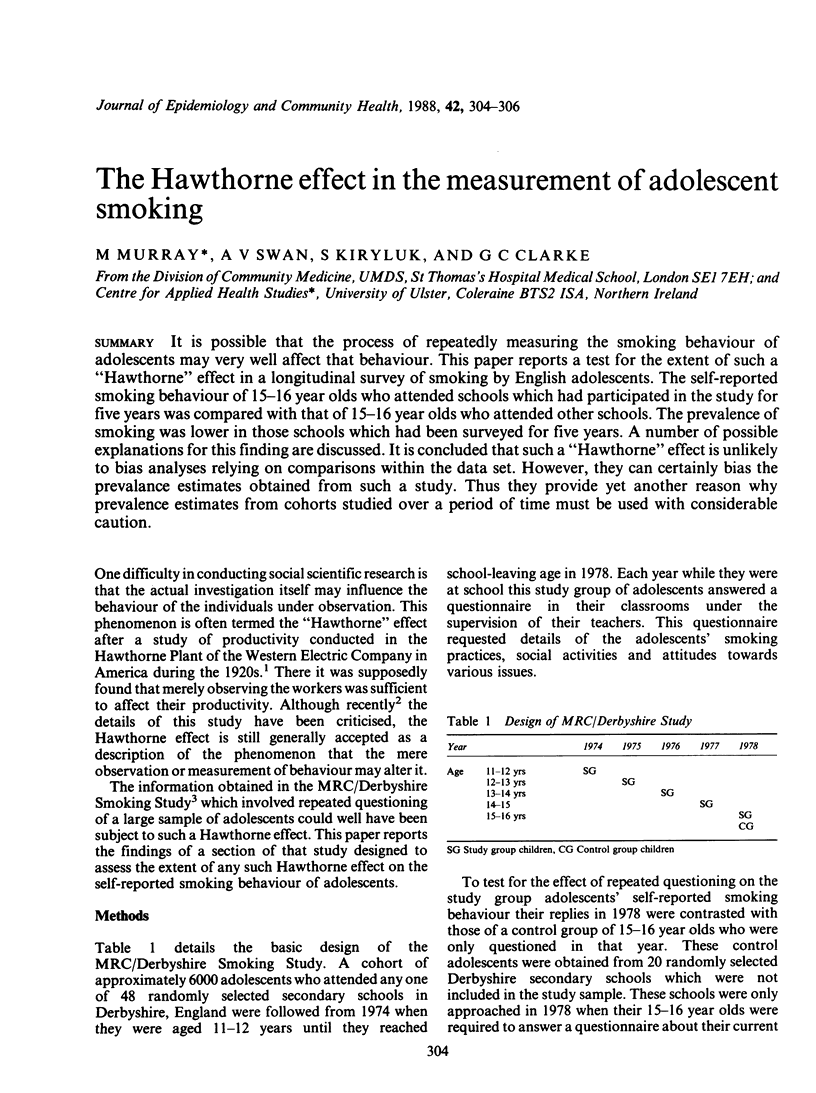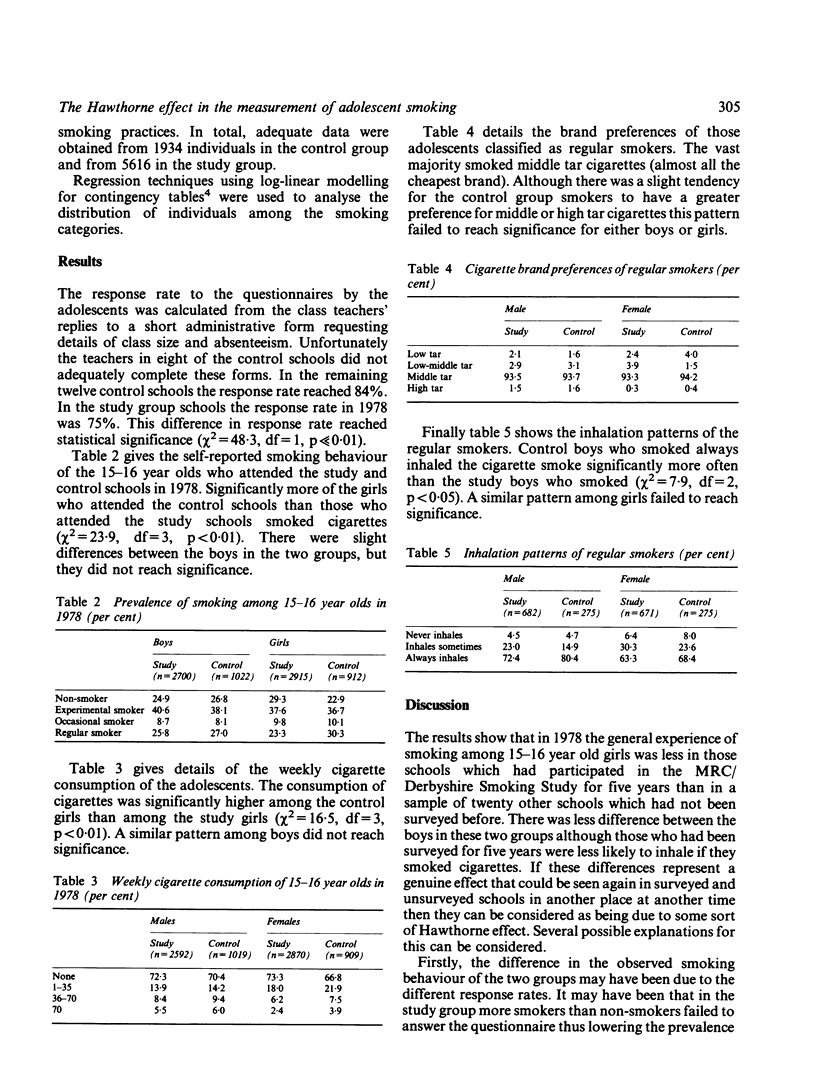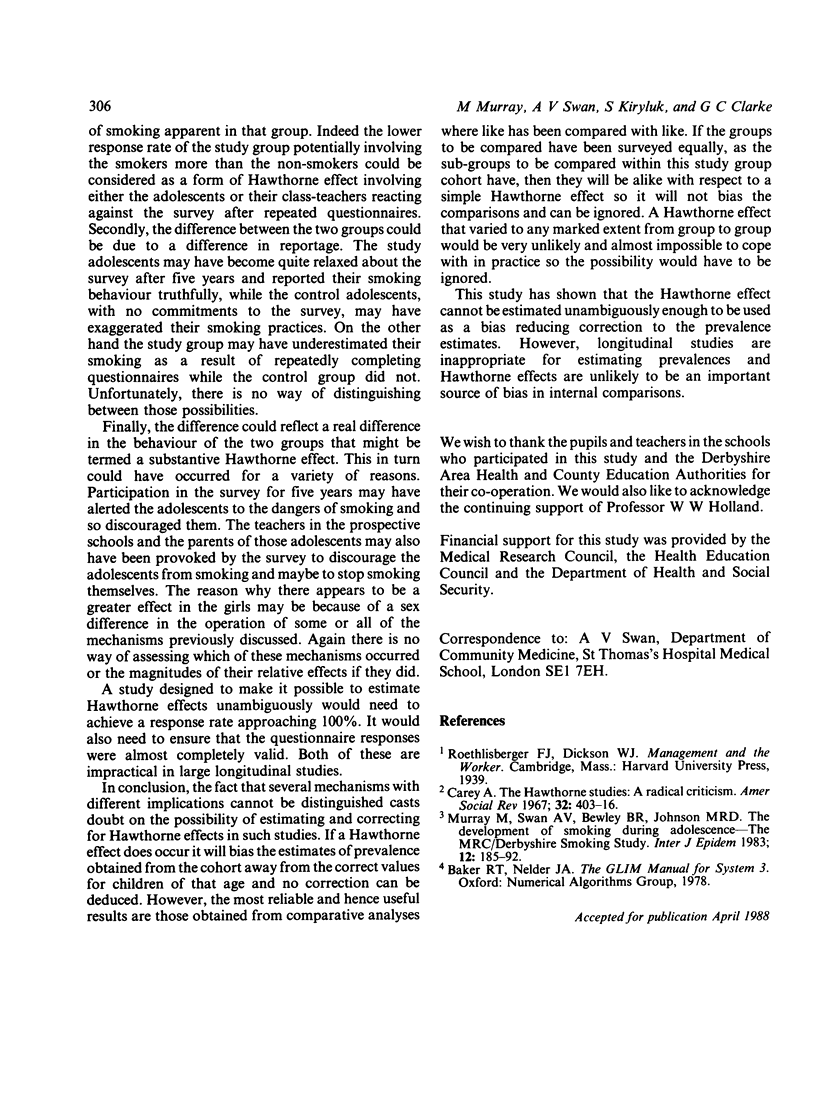Abstract
It is possible that the process of repeatedly measuring the smoking behaviour of adolescents may very well affect that behaviour. This paper reports a test for the extent of such a "Hawthorne" effect in a longitudinal survey of smoking by English adolescents. The self-reported smoking behaviour of 15-16 year olds who attended schools which had participated in the study for five years was compared with that of 15-16 year olds who attended other schools. The prevalence of smoking was lower in those schools which had been surveyed for five years. A number of possible explanations for this finding are discussed. It is concluded that such a "Hawthorne" effect is unlikely to bias analyses relying on comparisons within the data set. However, they can certainly bias the prevalance estimates obtained from such a study. Thus they provide yet another reason why prevalence estimates from cohorts studied over a period of time must be used with considerable caution.
Full text
PDF


Selected References
These references are in PubMed. This may not be the complete list of references from this article.
- Murray M., Swan A. V., Bewley B. R., Johnson M. R. The development of smoking during adolescence--the MRC/Derbyshire Smoking Study. Int J Epidemiol. 1983 Jun;12(2):185–192. doi: 10.1093/ije/12.2.185. [DOI] [PubMed] [Google Scholar]


